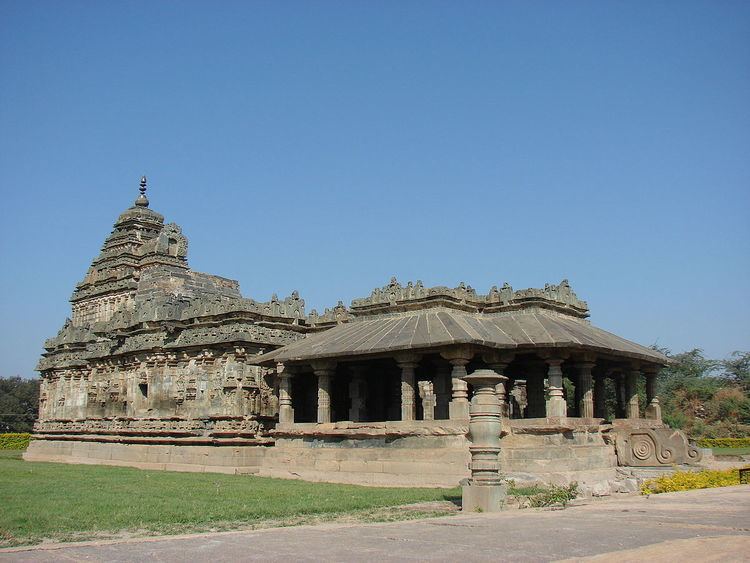Location Lakkundi, Karnataka Deity Mahavira Creator Kalyani Chalukyas | Affiliation Jainism Festivals Mahavir Jayanti Date established mid-11th century | |
 | ||
Address Lakkundi, Karnataka 582115 Similar Mannargudi Mallinatha Swamy J, Jain Temple - Kidanganad, Dimapur Jain Temple, Statue of Vasupujya, Kalugumalai Jain Beds | ||
The The Jain Temple, Lakkundi (or Jain Basadi) is located in the historically important temple town Lakkundi in the Gadag District of Karnataka state, India. Known as Lokkigundi in medieval times, the town was of considerable importance during the 11-12th century A.D. Western Chalukya rule. With the waning of their power, in 1191 A.D., the noted Hoysala empire king Veera Ballala II made this town an important garrison. The temple is protected as a monument of national importance by the Archaeological Survey of India.
Contents
Temple plan
According to art historian Adam Hardy, the architectural style of the temple can be classified as "Later Chalukya style, mainstream Lakkundi school of mid-11th century with late 11th century superstructure (shikhara)". The temple has single shrine (ekakuta vimana) connected to a closed hall via a vestibule (sukanasi or ardhamantapa) that is connected to an open hall (mantapa). According to art critic Percy Brown, these units are found commonly in all Western Chalukya temples. The building material is Soap stone, which according to Percy Brown became their standard and gained popularity in later day Hoysala architecture as well. According to art historians Henry Cousens and Om Prakash, the most conspicuous feature of the Western Chalukya temples is the decrease in the size of masonry and the resulting decrease in the overall height of the temples compared to those built by the Badami Chalukyas at Pattadakal. This was a result of a shift in the basic building material, from Sandstone to the more workable Soapstone (Chloritic Shist). In the coming decades, this transformation was to lead Vesara architecture toward increased ornamentation and articulation.
Cousens categorizes the tower over the shrine as Dravidian (south Indian) but historian Kamath feels it is more Vesara because each tier are encrusted with motifs that make the tower more "curvilinear". According to Cousens, the overall structure with its well proportioned tiers and finial (amalaka, kalasha) give the superstructure a "majestic" look. Above the cornice are circular niches, each of which holds the image of a Jain saint (Jaina) in relief, with a Kirtimukha decoration above. The walls of the shrine have pilasters, with the spaces between them containing, in relief, pavilions, and miniature decorative towers (aedicula) on slender half pilasters. Some miniature towers have niches below them. Overall, the decorative ornamentation is taken to a new level compared to earlier temples.
Sculpture
There are three notable free standing sculptures in the temple. An image of Mahavira that is a little over 4 feet tall, made of black polished stone and seated on a "lion throne" (simhaasana) is found outside the temple. Cousens feels it may have been taken out and left there. The saint has an attendant on either side, holding a chowri (a type of brush) in one hand a fruit in another. An exceptionally well rendered image of the god Brahma stands in the inner hall, and that of the goddess Saraswati stands at the entrance to the vestibule. In each of her four hands she holds an attribute; a ankusa (elephant goad), a petaled flower, a book and a citron. In addition to these sculptures, the relief of a Jaina is carved on to the door lintel of the sanctum and outer hall, and an image of Gajalakshmi (Lakshmi with elephants on either side) exists over entrance to the vestibule.
